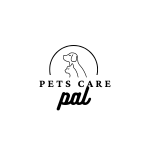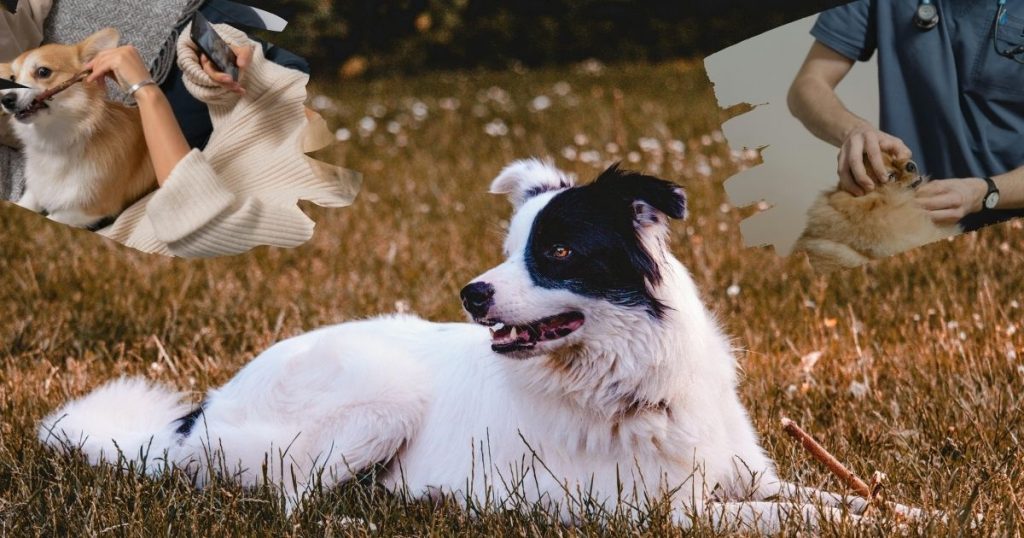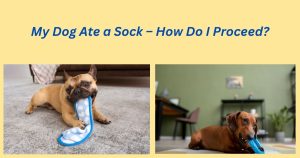In This Article
ToggleHelp! My Dog Swallowed a Bully Stick – What Should I Do? If you just saw your dog swallow a bully stick, you’re probably feeling panicked. Bully sticks are a popular and natural chew made from—beef, but when swallowed in large pieces or whole, they can become a serious problem. Many dog owners face this situation, and knowing how to act is crucial for your pet’s safety.
Dogs love bully sticks. Some dogs pass small pieces safely but excitement can lead to swallowing large pieces, causing choking, digestive issues, or a life-threatening blockage needing urgent care. If your dog swallows a bully stick, assess immediately. This article covers the dangers, signs, what to do, digestion time, safety, and prevention. If your dog is gagging, drooling, vomiting, or struggling to breathe, call your vet now. Otherwise, let’s go step by step to keep your dog safe.
My dog swallowed a bully stick
Understanding Bully Sticks
Bully sticks are one of the most popular and loved natural chews for dogs, highly appreciated by pet owners for their long-lasting nature and health benefits. They keep dogs entertained for hours, aid in dental health, and are generally easier on the stomach than some other chews. However, while bully sticks can be an excellent treat for your furry friend, they come with certain risks that every dog owner should be aware of.
What Are Bully Sticks?
Bully sticks, also called pizzle sticks, are chew treats made from the muscle tissue of a bull’s or steer’s penis. While this may sound unappealing to us, dogs find them highly irresistible. After being cleaned and dried, the muscle tissue is turned into long, stick-like shapes that dogs enjoy chewing on. They come in various sizes, from short, thick sticks to long, thin ones, depending on your dog’s needs and chewing habits. Bully sticks are made from a single ingredient—beef—and they are entirely digestible, which makes them a safer alternative to some other chews, like rawhide, which can cause gastrointestinal blockages.
What Are Bully Sticks Made Of?
The main ingredient in bully sticks is beef muscle, specifically the pizzle of a bull or steer. This makes them a single-ingredient, natural chew treat. They do not contain artificial colors, preservatives, or chemicals, which is why they’re considered a healthier option for dogs who love to chew. After being dried, they take on a tough yet chewy texture, which satisfies a dog’s urge to chew and helps maintain oral health by scraping away plaque and tartar. Not all bully sticks are the same. Some are smoked or baked for flavor, while others are air-dried. Pay attention to processing, as lower-quality ones may have additives or come from unethical sources.
Most bully sticks are made from beef, typically the pizzle (or penis) of a bull. The beef used in bully sticks can vary in quality, and the source of the beef can impact the safety and healthfulness of the treat. The best beef comes from grass-fed, free-range cattle raised without growth hormones, antibiotics, or harmful chemicals for a healthier, natural option. Knowing the beef source in bully sticks is important. Reputable manufacturers share this info, which gives you peace of mind by ensuring the stick is made from high-quality ingredients.
Are Bully Sticks Safe for Dogs?
While bully sticks are generally safe for most dogs, there are a few important considerations to keep in mind:
- Choking Hazards: If your dog is a vigorous chewer, they might bite off a large piece and accidentally swallow it, which can be a choking hazard. To minimize the risk, always supervise your dog while they enjoy their bully stick.
- Blockages: Although bully sticks are digestible, large chunks can still cause a blockage in your dog’s digestive system. It’s important to provide the appropriate size bully stick for your dog’s size and chewing strength.
- Overconsumption: Bully sticks are high in protein, so giving them to your dog too often can lead to an upset stomach or even pancreatitis. Moderation is key.
To ensure safety, choose bully sticks that are appropriately sized for your dog, and avoid giving them a bully stick that’s too small, which could easily be swallowed whole.
Bully Stick Composition and Safety
Bully sticks are a favorite snack for many dogs, and they can offer hours of chewing fun. However, while they are tasty and provide some health benefits, it’s crucial to understand the ingredients and factors that make them both a wonderful treat and a potentially risky one. Let’s dive deeper into bully sticks—what they’re made of, their safety concerns, and what makes them suitable or dangerous for your dog. Bully sticks are typically made from one main ingredient—beef. Bully sticks contain protein, collagen, and fat, providing a chewy texture and nutritional value and promoting muscle growth, joint health, and a shiny coat.
However, it’s important to know that some bully sticks may contain small amounts of salt for flavor. While a little salt is okay in moderation, too much can be harmful. Excess salt in bully sticks can harm your dog, causing dehydration or salt poisoning. Limit consumption and choose high-quality, chemicals free, salt-free sticks. Bully sticks are rich in collagen, supporting joint and dental health, but monitor intake to avoid excess fat and calories.
Why Bully Sticks Can Be Dangerous for Dogs

Bully sticks, like any treat, come with risks that dog owners should know. A major concern is choking, especially if dogs chew too fast or swallow large pieces. Jagged or sharp pieces can lodge in the throat, requiring vet intervention. Overconsumption is risky as bully sticks are high in protein and fat, potentially causing upset stomachs or pancreatitis, especially in sensitive dogs. Bully sticks can also cause intestinal blockages if swallowed whole, especially large pieces. Always supervise your dog while they enjoy their bully stick.
Condition of Bully Sticks
Bully stick quality is crucial for safety. Always check before giving it to your dog. Low-quality sticks vary in condition, and brittle or sharp pieces can cause cuts in their mouth or digestive tract injuries. If a bully stick has been improperly stored, it might also develop mold or unpleasant odors that could make your dog sick. On the other hand, fresh, properly stored bully sticks are safer. They should be dry yet flexible to prevent breaking into harmful pieces. Ensure they’re clean, mold-free, and odor-free before giving them to your dog.
Production Quality
Bully sticks vary in quality, affecting safety and digestibility. Some are air-dried or baked, while others are chemically processed for flavor or shelf life. These chemicals can be harmful, so choose natural, chemical-free bully sticks from reputable brands. High-quality bully sticks are 100% natural, free from artificial flavors, colors, or preservatives, making them healthier and more digestible for dogs. Look for products that emphasize clean and natural production methods, such as “grass-fed,” “free-range,” and “no additives” labels, as these are the best options for your pet.
Your Dog’s Dietary Needs
While bully sticks are a great source of protein, they may not be suitable for all dogs. If your dog has special dietary restrictions or health concerns, you should be cautious about offering bully sticks too frequently. For example, dogs with kidney disease or digestive issues may struggle with the high protein content, while dogs with pancreatitis could experience flare-ups from the fat content. If you’re not sure which bully sticks are best for your dog, consult your vet to determine if bully sticks suit your dog’s specific dietary needs and health safety.
Digestibility of Bully Sticks
One of the biggest benefits of bully sticks over other chews, such as rawhide, is that they are fully digestible. Rawhide can often lead to digestive issues or blockages, but bully sticks are designed to break down as your dog chews them. This makes them a safer alternative to other chew toys. That being said, it’s still important to give bully sticks in moderation as they are high in protein and fat. Eating too much at once can cause stomach upset or diarrhea. Always supervise to prevent swallowing large pieces that could cause a blockage requiring veterinary care.
Size of a Bully Stick
The size of the bully stick matters a lot. You should always choose a bully stick that is the right size for your dog. Small dogs need smaller bully sticks, while larger dogs can handle bigger ones. Giving a small dog a giant bully stick can be dangerous because they might try to swallow it whole, which could cause choking. On the other hand, a tiny bully stick for a large dog might get eaten too quickly, leading to overconsumption or a higher risk of choking.
Shape of a Bully Stick
Bully sticks come in various shapes, such as straight, twisted, or braided. The shape can influence how long your dog will spend chewing it. Twisted and braided bully sticks tend to last longer because they are harder to chew through, which can help prevent your dog from swallowing too quickly. Straight bully sticks are often easier to consume, so make sure to watch your dog closely. The shape of bully sticks affects teeth cleaning; curly or braided ones have more surface area to scrape plaque. However, regardless of shape, always supervise your dog while they chew.
Emergency Situations: When Your Dog Swallows a Bully Stick
Sometimes, despite our best efforts, dogs get too excited and end up swallowing their bully sticks too quickly. Whether your dog swallows the entire stick, part of it, or just the end, it can lead to health problems if not handled properly. In this section, we will explore the various scenarios when your dog swallows a bully stick, how to identify emergencies, and what to do if your dog is in trouble.
Accidental Ingestion Scenarios
Dogs, especially those who chew quickly or are new to chewing bully sticks, may accidentally swallow parts of them. This can happen in different ways, each requiring a different level of care and attention:
- My Dog Swallowed a Bully Stick Whole This is one of the most concerning scenarios. If your dog swallows a whole bully stick, it could lead to immediate problems. Depending on the size of the stick and your dog’s size, it could cause choking, a blockage in the throat, or even a blockage further down the digestive tract. If your dog has swallowed an entire bully stick, immediately check if they are coughing, gagging, or showing any signs of distress. If they are, call your vet or take them to an emergency clinic right away. They may need help to remove the object or might require surgery if the stick is stuck.
- My Dog Swallowed Part of a Bully Stick If your dog has swallowed only a piece of a bully stick, it may not seem as serious, but it still can be dangerous. Large pieces of a bully stick can become lodged in the stomach or intestines, leading to blockages or gastrointestinal issues. In some cases, sharp pieces may cause cuts to the digestive tract. If you notice any signs of discomfort—like vomiting, lethargy, or refusal to eat—contact your vet for advice.
- My Dog Swallowed a 3-inch Bully Stick A 3-inch piece of bully stick could still cause problems, depending on your dog’s size. Small dogs or puppies are more at risk of choking or developing blockages from even small pieces. If your dog swallows a 3-inch piece, especially if they are a small breed, keep a close watch on them. If they are acting strangely, it may be time to visit the vet. Even if your dog seems fine, don’t hesitate to seek professional help to ensure everything is okay.
- My Dog Just Swallowed a Whole Bully Stick If your dog just swallowed an entire bully stick and seems fine, don’t be fooled. There’s still a risk that the stick could cause internal issues. Ingesting something so large could lead to digestive tract blockages, especially if your dog has a smaller body size. Even if your dog isn’t showing symptoms, calling your vet right away can help avoid any complications. The sooner you catch potential problems, the better.
- My Puppy Swallowed a Bully Stick Puppies are especially vulnerable when it comes to swallowing things too quickly. Since their digestive systems are still developing, they may have trouble passing objects that are too large for their stomachs or intestines. If your puppy swallows a bully stick, it could lead to choking, digestive distress, or more serious complications. Puppies are also more likely to get excited and gulp down treats faster than adult dogs. Always supervise puppies closely when chewing on bully sticks to reduce the risk of accidental swallowing.
- My Dog Swallowed the End of a Bully Stick Sometimes, dogs chew on the end of a bully stick and accidentally swallow it. While this might seem like a smaller problem, the end piece can still cause choking or lead to a blockage if swallowed whole. It’s important to monitor your dog for signs of distress, such as coughing, gagging, or drooling. If they show any symptoms, don’t wait—call your vet.
- Puppy Swallowed a 2-inch Bully Stick A 2-inch bully stick might seem like a small piece, but for puppies, it could still cause choking or gastrointestinal blockages. Puppies are less experienced at chewing carefully, and they often try to swallow things quickly. If your puppy swallows a 2-inch piece, make sure to observe them closely for any signs of distress. If they’re acting lethargic, vomiting, or having trouble passing stool, it’s best to get in touch with your vet to ensure they’re not experiencing an obstruction.
Signs That Indicate an Emergency
It’s essential to know what to look for if your dog has swallowed a bully stick. Not all situations will result in immediate distress, but some signs could indicate that there’s a problem. Pay attention to the following:
- Choking or Difficulty Breathing: If your dog starts to cough, gasp, or struggles to breathe, it may be choking on the bully stick. If you suspect this, try to dislodge the object (if you can do so safely), but get to a vet or emergency clinic as quickly as possible.
- Coughing or Gagging: If your dog is continuously coughing or gagging without relief, it could indicate a piece of the bully stick is lodged in their throat. Even if they’re not choking, this could still cause harm and require vet intervention.
- Vomiting or Diarrhea: Vomiting or diarrhea after swallowing a bully stick could indicate that your dog is experiencing gastrointestinal distress, potentially from a blockage. If this continues for more than a few hours, take your dog to the vet.
- Lethargy or Loss of Appetite: If your dog is unusually tired or refuses to eat, it might be a sign that the bully stick is causing discomfort or distress. A blockage can make your dog feel ill or weak.
- Abdominal Swelling or Pain: If your dog’s belly looks swollen, firm, or they’re showing signs of pain when touched, this could be a sign that the bully stick is stuck in their intestines, causing a blockage.
What to Do If Your Dog Swallows a Bully Stick
Here’s what you should do in case your dog swallows a bully stick:
- Stay Calm: It’s essential to remain calm and assess the situation. Panic can make it harder to think clearly and act quickly.
- Check for Symptoms: Look for signs like coughing, gagging, or difficulty breathing. If you see any of these, it’s important to take your dog to the vet immediately.
- Contact Your Vet: Even if your dog doesn’t show immediate symptoms, it’s still a good idea to call your vet and describe what happened. They will advise you on whether you need to bring your dog in or monitor them at home.
- Follow Your Vet’s Instructions: Your vet may recommend inducing vomiting (if the swallowing was recent) or taking X-rays to check for a blockage. If your dog needs surgery to remove the bully stick, your vet will arrange that immediately.
Preventing Accidental Ingestion
Dogs love to chew, but getting too excited can swallow large bully stick pieces before fully breaking them down. Bully sticks are a favorite natural chew for many dogs, but without proper supervision and precautions, they can lead to serious problems like choking, digestive blockages, or stomach irritation. Understanding how to prevent these risks and ensuring safe chewing habits can help keep your dog happy and healthy while enjoying their favorite treat. To help avoid these stressful situations, here are some ways to prevent your dog from swallowing bully sticks too quickly:
- Supervise Chewing: Always supervise your dog when they’re chewing a bully stick to prevent swallowing large chunks. This way, you can intervene if they try to swallow the stick too quickly.
- Choose the Right Size: Ensure that the bully stick is the right size for your dog. Larger dogs can handle bigger bully sticks, while smaller dogs and puppies should have smaller pieces to avoid the risk of choking.
- Use a Bully Stick Holder: A bully stick holder can be a helpful tool to prevent your dog from swallowing the stick too quickly. It slows down their chewing and allows them to enjoy the treat at a safer pace.
- Limiting chewing: Limiting chewing to 10-15 minutes prevents softening and swallowing. After each session, store sticks properly to avoid bacteria and discard when too small to prevent ingestion risks.
What If a Bully Stick Gets Stuck in a Dog’s Throat?

If a bully stick is lodged in your dog’s throat, this is a life-threatening emergency. A stuck bully stick can make breathing difficult or even cut off airflow completely. Immediate signs of a throat obstruction include:
- Pawing at the Mouth – Your dog may frantically paw at their mouth to dislodge the stick.
- Excessive Drooling – A dog with something stuck in its throat may drool more than usual.
- Wheezing or Struggling to Breathe – If the airway is partially blocked, you might hear wheezing sounds or notice your dog having difficulty inhaling.
- Panic or Distress – Your dog may act frantic, pacing or shaking due to the discomfort.
What to Do
Check the Mouth – If you can safely see the bully stick, try to remove it with your fingers or tweezers, but be careful not to push it further down.
- Perform the Heimlich Maneuver – If your dog is choking and struggling to breathe, you may need to perform the Heimlich maneuver by applying firm pressure on their abdomen.
- Get Emergency Help – If the bully stick remains stuck or your dog is struggling to breathe, take them to the vet immediately.
- If not choking, monitor closely as most dogs pass it naturally, but blockages can occur. Offer fiber-rich foods like canned pumpkin, rice, or oat bran, and keep them hydrated.
Can Dogs Choke on Pizzle Sticks?
Yes, dogs can choke on pizzle sticks (another name for bully sticks) if they bite off large chunks or try to swallow them whole. Choking is more common in small dogs, puppies, or aggressive chewers who don’t take the time to chew properly. Always supervise your dog when giving them a chew to prevent this.
Will a Bully Stick Dissolve If Swallowed?
Bully sticks are digestible, but they don’t dissolve instantly. A swallowed piece will need to break down in the stomach before passing through the intestines. If the piece is too large, it may get stuck and cause a blockage, which can lead to vomiting, pain, and severe health risks.
Warning Signs of a Digestive Blockage:
Vomiting or retching
- Bloating or a hard belly
- Constipation or difficulty passing stool
- Loss of appetite
- Weakness or extreme tiredness
If your dog shows these symptoms after swallowing a bully stick, call your vet immediately.
Will a Dog Still Eat If Something Is Stuck in Its Throat?
Sometimes, a dog may continue to eat or drink even if something is lodged in their throat. However, they might:
- Eat more slowly than usual
- Drop food from their mouth
- Show signs of discomfort when swallowing
- Gag or cough after eating
Even if your dog appears to be eating, a stuck object can still cause severe irritation or infection. If you suspect your dog has something in its throat, get a vet check-up as soon as possible.
How Do I Know If My Dog Has a Stick Stuck in Its Throat?
If your dog swallowed a bully stick and is now acting differently, watch for these symptoms:
1. Frequent gagging or coughing
2. Excessive drooling
3. Difficulty swallowing
4. Panic or restlessness
5. Breathing difficulties
If you notice these signs, don’t wait—seek veterinary care immediately.
My Dog Swallowed a Bully Stick: Should I Be Worried?

Yes, you should always be cautious when a dog swallows a bully stick, even if they seem fine at first. While some dogs can digest them without trouble, others may develop blockages or irritation. It’s better to be safe and monitor your dog closely for the next 24-48 hours.
My Dog Has Eaten a Bully Stick, What Do I Do Now?
If your dog has swallowed a bully stick, here’s what you should do:
Assess the Situation – Check if they are choking or showing signs of distress.
Watch for Symptoms – Monitor their behavior for any signs of gagging, vomiting, or discomfort.
Encourage Hydration – Offer plenty of water to help the stick pass through their digestive system.
Check Their Stool – If your dog swallows a piece of bully stick, watch for it to pass in their poop within 24-48 hours.
Call the Vet if Needed – If your dog seems uncomfortable, stops eating, or shows any warning signs, contact your veterinarian.
Clinical Signs Your Dog Has Eaten a Bully Stick
🚩 Mild Symptoms:
- Mild drooling
- Slight gagging after swallowing
- Increased thirst
🚨 Moderate to Severe Symptoms (Call the Vet): Seek veterinary help. The vet may use X-rays or ultrasound to check for obstruction and perform surgery or endoscopy if needed.
- Vomiting or dry heaving
- Lethargy or weakness
- Refusing to eat
- Signs of pain (whining, hunching over)
- No bowel movement for over 24 hours
- choking signs (coughing, gagging, pawing at mouth, drooling, distress), check their mouth, remove the object if visible, and avoid pushing it deeper, throat obstruction, or a digestive blockage
Ensuring Safe Chewing Practices
Bully sticks can be a great addition to your dog’s routine when used responsibly. To prevent accidents, always choose the right size, supervise chewing, and use a bully stick holder to stop your dog from swallowing large pieces. Limiting chewing sessions and properly storing bully sticks can further reduce risks. If ingestion occurs, act quickly and provide the necessary support to help your dog digest the treat safely.
By following these preventative steps and knowing how to respond in an emergency, you can keep your dog safe while allowing them to enjoy a natural, satisfying chew.
Safe Chew Alternatives and Accessories
Bully sticks are a popular treat for dogs, but they come with risks, especially for dogs that chew aggressively or swallow large pieces. If you want to keep your dog safe while still satisfying their chewing needs, there are better alternatives and accessories designed to minimize choking and digestive issues. If your dog has had trouble with bully sticks in the past, there are plenty of alternative chews that provide a safe and satisfying experience. Dehydrated sweet potato chews are a plant-based option that is gentle on digestion. Collagen chews, made from beef collagen, are easier to digest than traditional bully sticks and promote joint health.
Beef tendons and trachea chews offer a similar texture to bully sticks but are softer and less likely to cause choking or digestive blockages. Options like rubber chew toys, dental chews, and vegetable-based treats are great for dogs who need to chew without the potential risks associated with bully sticks. You can also explore other natural chews, such as antlers. Always make sure that the chew is suitable for your dog’s size and chewing habits.
unlike synthetic chews that may contain harmful chemicals or preservatives. Many dog owners choose bully sticks for a satisfying, healthy chew. Unlike rawhide, they’re fully digestible and less likely to cause gastrointestinal blockages. Bully sticks clean teeth, promote oral health, and offering an outlet for instincts, help excessive chewers by reducing boredom, anxiety, and destructive behavior. Choose high-quality, ethically sourced bully sticks free from harmful additives, chemicals, hormones, or antibiotics.
Nylabone
Are Nylabones Safe for Dogs?
Nylabones are one of the most well-known chew toys, designed to be long-lasting and durable. They are made from nylon and come in various textures and flavors, making them appealing to dogs. However, whether they are safe depends on your dog’s chewing behavior.
Gentle chewers can safely enjoy Nylabones for extended periods, but aggressive chewers may break off sharp pieces, which can cause injuries to the mouth, throat, or digestive system. If a Nylabone shows deep teeth marks, cracks, or missing chunks, it should be replaced immediately. Always choose the appropriate size and hardness level for your dog’s chewing strength to prevent problems.
Can a Nylabone Cause a Blockage?
If a dog swallows a large chunk of a Nylabone, it can cause a serious blockage in their digestive tract. Unlike natural chews, Nylabones are not digestible, meaning any swallowed piece can get stuck and require medical intervention. Symptoms of a blockage include vomiting, loss of appetite, lethargy, and difficulty passing stool. If you suspect your dog has swallowed part of a Nylabone, contact your vet immediately. Supervised chewing is essential to ensure your dog does not break off and ingest dangerous pieces.
Can a Dog Eat Too Much Bully Stick?
Bully sticks are made from dried beef muscle, which makes them a protein-rich chew. While they are digestible, eating too much can cause health problems. Since they are high in calories and fat, excessive consumption can lead to weight gain, upset stomach, or diarrhea. Some dogs may also develop pancreatitis, a painful condition caused by high-fat foods. To prevent these issues, limit your dog’s bully stick intake to a few times a week and restrict chewing sessions to 10-15 minutes. Freshwater should always be available to help with digestion.
Bully Stick Holders: A Must-Have for Safety

A bully stick holder is a simple but essential tool that prevents dogs from swallowing the last, small piece of the chew, which is the most dangerous part. These holders grip the bully stick tightly, allowing dogs to chew safely without the risk of gulping down a large chunk that could cause choking or blockages. Bully stick holders come in various sizes to fit different chews, and investing in one is an easy way to make these treats safer.
Best Dog Chews for Safety
If you are looking for alternatives to bully sticks and Nylabones, there are plenty of safer options. Rubber chew toys like KONGs are excellent because they are durable and can be filled with treats or peanut butter to keep dogs entertained. Himalayan yak chews, made from hardened cheese, are another great alternative because they last a long time and are fully digestible. For a natural option, raw carrots or frozen wet dog food cubes can provide a satisfying chewing experience while being easy on the stomach. Soft dental chews are also a good choice, as they help clean teeth while being safe to swallow.
How to Stop My Dog from Swallowing Treats Whole
Some dogs eat too fast and swallow treats without properly chewing, which increases the risk of choking and stomach problems. To prevent this, consider using a slow feeder or chew holder, which forces dogs to take smaller bites. Choosing larger treats that are too big to swallow in one gulp can also help. Supervising your dog while they chew is crucial, as it allows you to step in if they try to swallow something too quickly. Training your dog with commands like “gentle” or “easy” can encourage slower eating habits.
By selecting the right chew toys and following safe chewing practices, you can keep your dog entertained while reducing the risk of choking and digestive issues. Making smart choices about chew products and supervising your dog’s chewing time can ensure they enjoy their treats without any dangerous consequences.
Wrap-Up: Ensuring Your Dog’s Safety with Bully Sticks
Bully sticks offer entertainment and dental benefits but can cause choking and blockages. Supervise your dog, use the right-sized, high-quality, chemical-free stick, and a holder to prevent swallowing the last piece. Limit chewing time to prevent digestive issues and tooth fractures. Watch for choking, gagging, vomiting, or discomfort. Seek veterinary help if a blockage or distress occurs.
Safe chew alternatives include Himalayan yak chews (long-lasting and digestible), rubber KONG toys (treat-filled for entertainment), and beef tendons (easier to digest with less choking risk). Choose safe chews, supervise your dog, and monitor habits to prevent emergencies; seek help immediately if your dog swallows a bully stick and is in distress for safe treat enjoyment.







